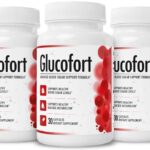 " title="The Dangers of Sugar: 10 Simple Ways to Cut Back
" decoding="async" srcset="https://www.medrot.com/wp-content/uploads/2022/02/Sugar.jpg 605w, https://www.medrot.com/wp-content/uploads/2022/02/Sugar-300x178.jpg 300w" sizes="(max-width: 605px) 100vw, 605px" />
" title="The Dangers of Sugar: 10 Simple Ways to Cut Back
" decoding="async" srcset="https://www.medrot.com/wp-content/uploads/2022/02/Sugar.jpg 605w, https://www.medrot.com/wp-content/uploads/2022/02/Sugar-300x178.jpg 300w" sizes="(max-width: 605px) 100vw, 605px" />Sugar is a common ingredient in a lot of the foods we eat these days. The list goes on and on: chocolate bars, frozen yogurt, lattes, and so on. While it adds an obvious sweetness to a dish that could brighten or round it out, it’s also one of the leading causes of weight gain. Sugar consumption can lead to an increase in appetite for other foodstuffs, which can lead to weight gain and the health problems that come with it.
Obesity is a significant element for metabolic disorders such as type 2 diabetes, heart disease, and stroke. While people could be fit at different weights, obesity is a major risk factor for metabolic diseases like diabetes, cardiovascular disease, and stroke. Individuals who consume a lot of sugar, irrespective of their weight, are at a higher risk of developing health problems.
Take all the necessary simple sugar-reduction tips to avoid a sugar crash. A few minor adjustments can significantly reduce the quantity of sugar you consume while also improving your overall health and wellbeing.
10 simple ways to cut back:-
Table of Contents
Leave out the extra sugar.
Sugar can be found in a variety of meals, ranging from fruits to starchy vegetables. While your doctor may advise you to limit all types of sugar if you’re at risk for specific diseases, you should minimize added sugar in general. In contrast to fruits, vegetables, and whole grains, added sugars are absorbed more quickly in the body, leading to elevated insulin output. They furthermore comprise no other nutrients. “Moderation is essential,” Eisner argues. Treat yourself to sweets, but avoid consuming too much sugar in your everyday routine.
To drastically cut on empty calories, look for baking recipes that use sugar substitutes in place of a few of the sugar, drink coffee or tea without sugar, or add fruit to your oatmeal.
Sugar consumption should be reduced.
Sugar is abundant in juice, soda, and sweetened coffee drinks, and they, like sweets and desserts, provide no nourishment to your diet. Limiting the quantity of sugar you intake in drinks is an easy strategy to reduce sugar consumption. While diet sodas with additives may appear to be a better alternative, a growing number of studies have linked them to health problems. Drinking hydrated beverages such as water, flavored seltzer, or unsweetened tea is a good idea.
Sweet appetizers and desserts
The idea isn’t to eliminate dessert from your life but to reduce your sugar intake to a more healthy level. That may entail eating dessert less frequently, choosing healthier sweet substitutions, and, of course, controlling the extra sugars that are seeping into your diet in other areas.
Dark chocolate is a must. It has a lower sugar content than other desserts and may have health benefits. People who consume dark chocolate had fewer desires for sweet, salty, or fatty food. Dark chocolate is also high in antioxidants, which assist to prevent cellular damage, which is involved in the formation of many ailments.
Purchase the unsweetened versions.
Limiting your eating plan to whole foods may not be possible, just as eliminating sugar isn’t. If you must buy pre-packaged foods, choose those without added sugar or other added sugars. Milk alternative options including soy milk or almond milk, apple sauce, nut butter, canned fruit, dried fruit, marinara sauce, and ketchup are all easy to swap out for unsweetened variants.
Keep an eye on your portion sizes.
If you must have a sugary treat, as we already do occasionally, try to limit yourself to one scoop of ice cream or 1⁄2 of a pastry. It may also be beneficial to exercise mindfulness during the process. Slowing down and savoring each bite will help you realize when you’re full and keep your sugar intake under control.
Read the labels on the foods you buy.
It is critical to understand the ingredients used in the preparation of food. Assume the first few components on the list are sugar and high-fructose corn syrup. Then try to eat something much more nutritional. Always look at the total but remember that this includes both added and naturally present sugars.
Increase your physical activity.
Physical activity promotes the release of “feel-good” endorphins, which might help you feel better. Mild exercise activates metabolic pathways that increase blood sugar availability to the brain, lowering sugar cravings. Emotional eaters’ cravings are also reduced.
Sauces with additional sugar should be avoided.
Most kitchens have sauces like ketchup, bbq sauce, pasta sauce, and sweet chili sauce. Nevertheless, the majority of people are unaware of their sugar intake.
1 teaspoon of sugar is contained in a 1-tablespoon serving of ketchup. That implies ketchup has 29 percent more sugar in it than ice cream (15Trusted Source, 16Trusted Source). To avoid concealed sugars in seasonings and sauces, opt for those that are labeled “no additional sugar. Herbs and spices, chili, mustard, vinegar, pesto, mayonnaise, and lemon or lime juice are all particularly low in refined sugar and can be used to flavor your cuisine.
Be watchful.
Each of these suggestions falls under the umbrella of being more conscious of what you eat. This is an excellent idea for anyone who wants to start or maintain a healthy diet and lose weight. Keeping track as to how many sugary snacks you consume or reviewing the nutritional details on goods before eating them will help you realize how much sugar you’re consuming. Diets can help you make a change, but you’ll be in a much better position to make sensible, healthy decisions if you’re more conscious of what you’re getting into your system. Now that you know how terrible too much sugar can be for our health, keeping track of how much sugar you consume should be a goal.
Reduce the intake gradually.
It’s quite easy to become addicted to sugar. Slowly wean yourself off. Reduce the amount of sugar in your coffee by half, or shift to a calorie-free natural sweetener like stevia. Make a plan for how you’ll use your daily sugar allowance. The removal of sugar from the latte will assist.






